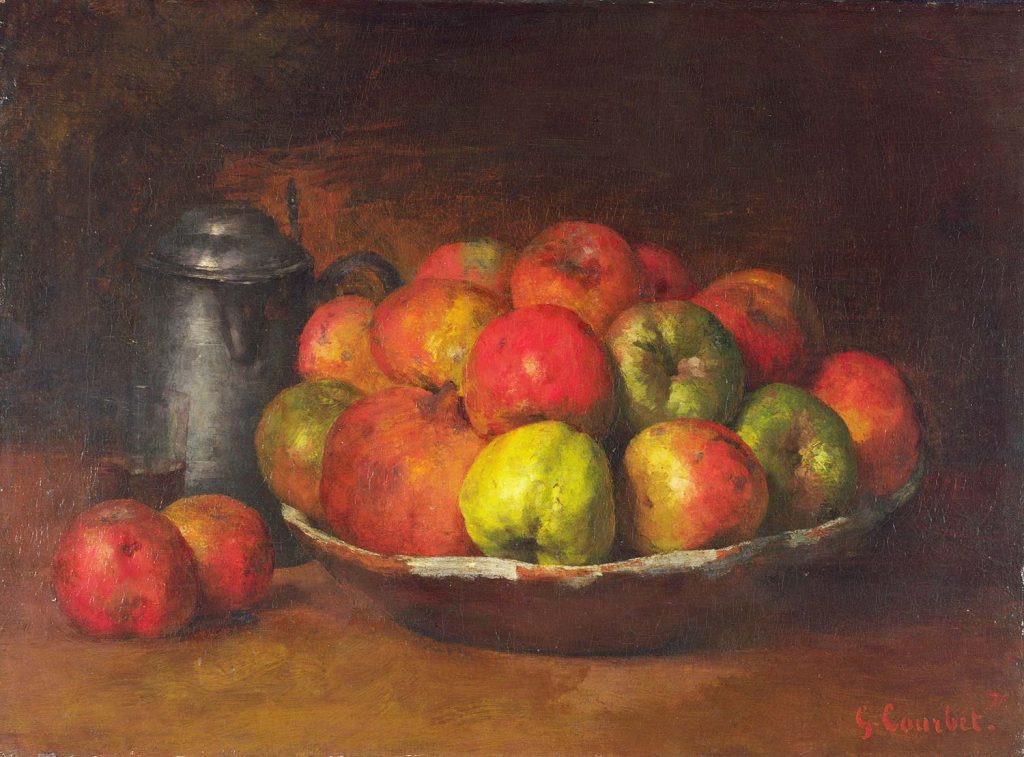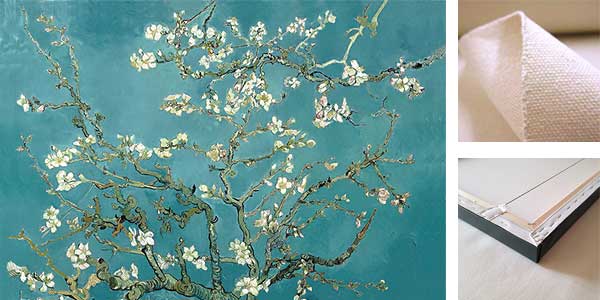
Still Life with Apples and a Pomegranate by Gustave Courbet was created in 1871 – 1872. The painting is in National Gallery London. The size of the work is 44,5 x 61 cm and is made of oil on canvas.
About the Work
In a warm and dark room Courbet’s rich, ripe apples seem to glow as if in firelight. Among them is a single pomegranate, squeezed in at the base of the heap. The heavy earthenware bowl lined with pale blue slip seems almost too small for the weight of the fruit piled into it. On the brown oak table, two apples sit in front of a pewter coffee pot that glints in the light. Close by is a tall, straight glass of red wine. The painting quickens all the senses. It is as if Courbet is saying that this simple scene holds all that is needed for fulfilment and contentment.
In 1871 Courbet was arrested for his part in the toppling of the Vendóme Column, erected in 1820 by Napoleon I to commemorate the Battle of Austerlitz, during the Paris Commune, the radical government that ruled Paris from March to the end of May that year. Always opposed to imperial rule, in 1870 Courbet had refused the Légion d’honneur and became a founding member of the Arts Commission of the Commune. When the Commune fell, Courbet was taken to Sainte Pélagie, a jail in Paris, because of his fierce, rebellious stance. Read more in National Gallery London
About the Artist
Jean Désiré Gustave Courbet (10 June 1819 – 31 December 1877) was a French painter who led the Realism movement in 19th-century French painting. Committed to painting only what he could see, he rejected academic convention and the Romanticism of the previous generation of visual artists. His independence set an example that was important to later artists, such as the Impressionists and the Cubists. Courbet occupies an important place in 19th-century French painting as an innovator and as an artist willing to make bold social statements through his work.
Courbet’s paintings of the late 1840s and early 1850s brought him his first recognition. They challenged convention by depicting unidealized peasants and workers, often on a grand scale traditionally reserved for paintings of religious or historical subjects. Courbet’s subsequent paintings were mostly of a less overtly political character: landscapes, seascapes, hunting scenes, nudes, and still lifes. Courbet was imprisoned for six months in 1871 for his involvement with the Paris Commune and lived in exile in Switzerland from 1873 until his death four years later. Read more in Wikipedia
Order a reproduction of this work (printed on canvas)
